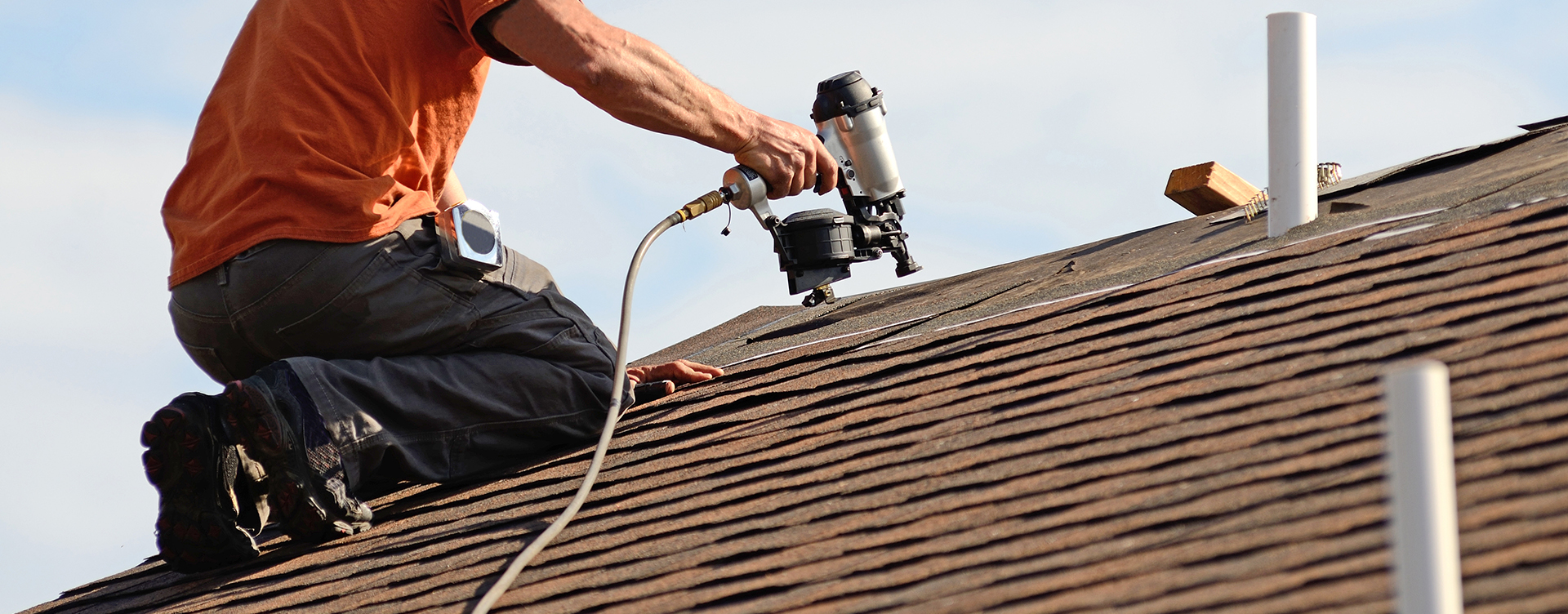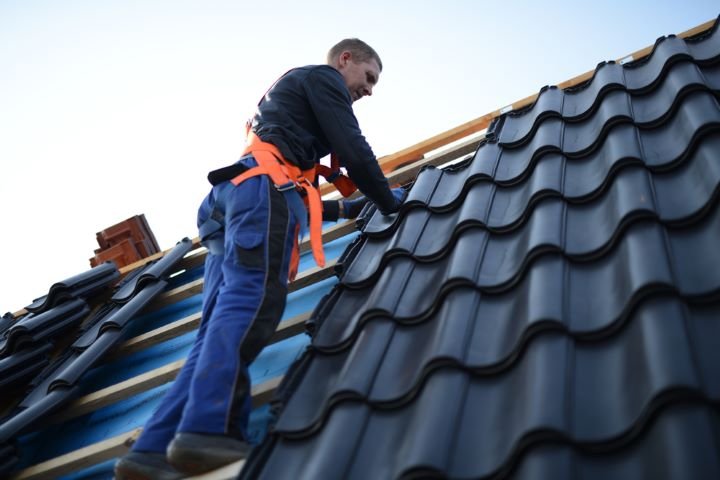Common Blunders to Avoid Throughout Roof Flat Roof Setup Tasks
Flat roofing system setup projects call for precise interest to information, as forgeting usual mistakes can significantly lessen the roofing's performance and life expectancy. As the ramifications of these errors end up being obvious, understanding the subtleties of appropriate installation techniques is crucial for making certain a resilient and trustworthy level roof covering system.
Ignoring Correct Drain

Designing a reliable drain system includes strategically putting drains, scuppers, and seamless gutters to promote the appropriate circulation of water away from the roofing system surface area. Furthermore, the roof covering's incline ought to be carefully taken into consideration, as even a mild slope can significantly boost drainage capacities. Failure to make up these elements can cause significant water management concerns.
By prioritizing proper drain during the setup phase, property owners can alleviate lasting threats, maintain the roof's architectural honesty, and expand the life-span of the roofing system. Eventually, a well-planned drainage strategy is vital for ensuring the effectiveness and reliability of level roof installations.
Missing Quality Material Checks
One usual oversight in flat roof installation is the failing to perform comprehensive quality checks on roof covering products. This oversight can bring about substantial long-lasting issues, as the sturdiness and efficiency of the roof largely depend upon the top quality of the materials used. Poor examinations can cause the use of second-rate membranes, insufficient waterproofing products, or low-grade insulation, which can jeopardize the integrity of the whole roof covering framework.
Failing to validate the requirements of roof materials can additionally result in compatibility problems. Using incompatible sealers or adhesives can result in premature failing of the roofing system. Poor-quality products may not satisfy local structure codes or manufacturer service warranties, leaving property owners at risk to expensive repair services and replacements.
To mitigate these dangers, it is vital to establish a rigid top quality control process that consists of verifying the qualifications of distributors, analyzing products upon delivery, and conducting tests as essential. Investing time in these high quality checks makes sure that the roof covering setup is not just compliant with industry criteria however likewise adds to the long life and performance of the level roof covering. Ultimately, this diligence will conserve time and sources in the future.
Disregarding Insulation Needs
Many house owners and professionals ignore the value of correct insulation in level roof covering installments (Cuyahoga Falls Roof Repairs). Ample insulation is critical not just for power performance yet also for the long life of the roof. Insulation aids to manage interior temperature levels, protecting against warmth loss in winter season and warm gain in summer season, which can bring about considerable financial savings on power bills
Disregarding insulation requirements can cause a host of troubles, consisting of ice dam mold and mildew, condensation, and formation growth. These concerns can endanger the architectural integrity of the roof and bring about expensive repair work. In addition, not enough insulation might void service warranties on roofing materials, leaving home owners economically vulnerable if issues occur.
To stay clear of these risks, it is necessary to stick to regional building regulations and power efficiency standards when choosing insulation products and techniques. Properly examining the roofing framework and understanding the details insulation needs based on environment and roofing design is essential. Involving with a certified roofing specialist can make sure that insulation is mounted correctly, hence improving energy performance and extending the roofing's lifespan. why not check here Focusing on insulation throughout flat roofing installment jobs is a basic step that ought to not be forgotten.
Failing to Follow Producer Guidelines
Disregarding maker guidelines during level roof covering setup can result in significant issues down the line. These standards are developed to ensure optimal performance, durability, and safety and security of the roof. Each supplier offers details guidelines pertaining to materials, setup methods, and maintenance requirements that are vital for the roof's integrity.
When installers differ these referrals, they risk compromising the roof covering's waterproofing capacities, which can cause leakages and architectural damage. In addition, incorrect installment can nullify warranties, leaving residential property proprietors vulnerable to pricey repair work.
Moreover, manufacturers usually carry out strenuous screening of their items under controlled problems. Disregarding their requirements implies overlooking the scientific research behind the materials, which can bring about premature failure. As an example, the recommended adhesive or bolt types might be vital in securing the roof membrane layer; utilizing alternatives can endanger the roof covering's performance.
Undervaluing Climate Problems
Appropriate level roof setup calls for an extensive understanding of different variables, consisting of the effect of weather. Overlooking to represent these conditions can cause considerable problems throughout and after the installation process. Extreme temperatures, whether chilly or warm, can impact the products used, modifying their attachment properties and jeopardizing the roofing's stability.
For circumstances, mounting roofing materials during exceedingly high temperatures can trigger them to warp or end up being overly pliable, resulting in inappropriate securing. On the other hand, low temperatures can impede the appropriate curing of adhesives, causing weak bonds that might fall short in the long-term. Rain image source and wind additionally position considerable risks; moisture can penetrate the roof during setup, leading to mold and mildew development and architectural damage.

Conclusion
To conclude, avoiding common mistakes throughout level roof covering installment is essential for ensuring the roofing system's stability and durability. Interest to proper drainage, rigorous quality material checks, adherence to insulation needs, conformity with supplier standards, and factor to consider of weather are important variables. By focusing on these facets, the dangers of leaks, product failure, and reduced efficiency can be dramatically reduced, ultimately bring about a effective and resilient roof covering job. Careful preparation and implementation are important for optimum outcomes.
Flat roof setup projects need thorough attention to information, as neglecting usual mistakes can dramatically reduce the roof's efficiency and life-span. By focusing on appropriate water drainage during the installation phase, house owners can mitigate long-term dangers, maintain the roofing's structural stability, and prolong the life-span of the roof covering system.One usual oversight in flat roofing system installment is the failing to carry out comprehensive high quality checks on roof covering products. Investing time in these top quality checks ensures that the roofing setup is not only certified with market criteria yet additionally adds to the longevity and performance of the flat roof.In final thought, staying clear of common mistakes throughout level roof covering setup is crucial for guaranteeing the roofing system's honesty and longevity.